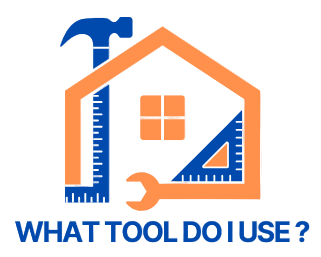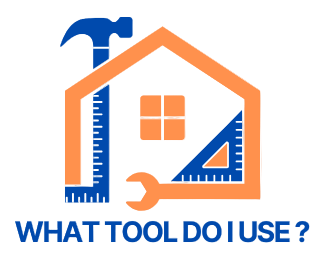Quick summary: 🧰 A spirit level is one of the most essential DIY tools for beginners. It helps you create perfectly level and plumb results. Whether you’re hanging shelves, laying tiles, or installing furniture. This guide shows how to use one correctly, avoid common mistakes, and get professional results at home.
To use a spirit level correctly, place it on the surface you’re checking, look at the bubble, and adjust until it sits exactly between the centre lines. The bubble tells you whether your surface is level (horizontal) or plumb (vertical), ensuring everything is perfectly aligned.
🎓INTRO: Why a Spirit Level Belongs in Every Beginner’s Tool Kit.
If you’ve ever hung a picture only to realise it’s slightly crooked, you already understand why a spirit level matters. This simple, precise tool makes every project look neat and professional. For anyone starting their DIY journey, it’s one of the essential DIY tools for beginners - the foundation of accuracy and confidence.
In this step-by-step guide, you’ll learn how a spirit level works, the different types available, and exactly how to use it for all sorts of DIY tasks - from hanging mirrors to levelling decking. You’ll also discover expert tips, maintenance advice, and real world examples to help you master this timeless tool.
🔧 What Is a Spirit Level and How Does It Work?
A spirit level (or bubble level) is a precision tool used to check whether a surface is perfectly horizontal (level) or vertical (plumb). Inside are sealed tubes filled with liquid and an air bubble. When you place the level on a surface, gravity causes the bubble to move to the highest point in the tube. When it rests between the two central lines, the surface is even.
Understanding the Vials
Most spirit levels include at least two vials, one for horizontal readings and one for vertical. Longer levels may also have a 45-degree vial for angled work. Each vial is slightly curved to help the bubble settle quickly at the highest point, providing instant visual feedback.
Why Accuracy Matters
Even a few millimetres out of level can make a shelf slope, a door misalign, or a tile pattern look uneven. A reliable spirit level ensures precision, balance, and a professional finish, saving time on rework and improving overall results.
📏 Different Types of Spirit Levels (and When to Use Them)

Choosing the right type helps you work faster and more accurately. Here are the main varieties you’ll encounter:
- Carpenter’s Level: The classic full-length design, ideal for walls, floors, and long surfaces.
- Torpedo Level: Small and portable, great for tight spaces or hanging frames.
- Magnetic Level: Attaches to metal surfaces, perfect for steelwork or pipes.
- Line Level: Clips onto a string line for checking long outdoor stretches like fences or patios.
- Post Level: Wraps around poles or posts to check plumb from multiple sides at once.
- Digital or Laser Level: Uses electronic sensors or light beams for precision alignment - ideal for larger or professional setups.
For beginners, a 600mm or 900mm carpenter’s level is ideal: Long enough for furniture and shelves, short enough to handle easily.
🎯 Step-by-Step: How to Use a Spirit Level Correctly
Here’s how to achieve perfect results, whether you’re installing a floating shelf or checking a patio slab.
1. Prepare Your Tools and Surface
Ensure your level is clean, free from dust or dried paint, and undamaged. Wipe both edges with a dry cloth. Check the surface you’re measuring - debris or warping can distort readings.
2. Place the Level Properly
Lay the level flat for horizontal readings, or upright for vertical checks. Always ensure it’s fully in contact with the surface - no rocking or gaps. A flush fit guarantees accuracy.
3. Read the Bubble
Look directly at the centre of the vial. If the bubble sits between the two black lines, the surface is level or plumb. If it drifts to one side, that side is higher. Adjust until the bubble centres perfectly.
4. Make Adjustments
Adjust shelves, brackets, or frames slightly at a time. Once the bubble sits dead centre, hold or fix the piece in place. If you’re drilling, mark the holes before removing the level so your alignment stays true.
5. Double Check Both Directions
To ensure total accuracy, check again at 90° (front to back and side to side). This ensures the entire surface is square and not just level along one axis.

⚠️ Common Mistakes Beginners Make (and How to Avoid Them)
1. Only Checking Once
Always take multiple readings, especially after securing screws or nails. Tightening fittings can pull the material slightly off level.
2. Using a Damaged Level
A bent frame or cracked vial can throw off every measurement. Treat your level carefully and replace it if damaged.
3. Tilting the Level
Even a small tilt changes where the bubble sits. Make sure your level rests flat against the surface with even pressure.
4. Skipping the Vertical Check
The vertical (plumb) vial is just as important. Use it for installing posts, frames, mirrors, and tiles: Anything that needs to be straight up and down.
5. Forgetting to Recheck After Adjustments
Once you secure something, always give it a final check. Professional tradespeople make this a habit as it ensures perfect results every time.
🏠 Real-World Examples: When to Use a Spirit Level
- Hanging Shelves: Place the level along the top edge before marking screw holes. Recheck after tightening.
- Laying Decking or Patio Slabs: Use a long level across boards or tiles to ensure water runs off evenly without pooling.
- Installing Cabinets: Check alignment between multiple units using both horizontal and vertical vials.
- Building Furniture: Use a torpedo level to ensure each panel sits square during assembly.
- Hanging Pictures or Mirrors: Mark both ends of your frame using a level to keep artwork perfectly straight.
These practical tasks help build muscle memory and confidence and will turn tool awareness into real DIY skill.
🧠 Pro Tips for Perfect Levelling Results
- Place thin spacers (known as shims) under uneven items like shelves or frames to get them perfectly level before fixing.
- Mark reference points with a pencil - especially useful for multi-shelf installations.
- Work in pairs for large surfaces like countertops; one person reads the level while the other adjusts.
- Calibrate your level every few months: place it on a flat surface, note the bubble’s position, rotate 180°, and see if it matches.
- Keep it clean and dry - store flat or hung on a wall to protect accuracy.
- Combine with a laser level for long walls or multi-point alignments - the classic bubble level remains vital for spot checks.
🪚 Expanding Your Toolkit: Other Essential DIY Tools for Beginners
Building your foundation of essential tools will make every future project easier. Alongside your spirit level, include:
- Tape Measure: Accurate measurement is half the battle.
- Hammer: For driving nails and fitting trim.
- Screwdriver Set: Interchangeable heads for all fittings.
- Adjustable Wrench: Perfect for plumbing and furniture bolts.
- Utility Knife: For cutting wallpaper, plastic, or tape cleanly.
- PPE: Gloves, goggles, and ear defenders for safety.
Together, these create a balanced, capable starter kit for confident DIY work - the foundation of every future skill you’ll learn.
💬 FAQ: Spirit Level Basics for Beginners
Can I use a spirit level outdoors?
Yes, but ensure it’s rated for outdoor use. Moisture resistant or magnetic models work best for external jobs like fencing and patios.
How often should I replace a spirit level?
If well cared for, a good quality level can last for decades. Replace it if it’s been dropped, bent, or gives inconsistent readings when tested.
Are digital spirit levels better?
They’re more precise for specialised work, but a classic bubble level is perfect for general DIY and learning accuracy by eye.
Can I use my smartphone as a level?
Phone apps are fine for rough checks, but they rely on sensors that can drift. For dependable precision, always use a real tool.
What’s the best size level for beginners?
A 600mm (24-inch) level strikes the perfect balance: Small enough for shelves, long enough for larger projects.
🏁 Conclusion: Level Up Your DIY Skills
Learning to use a spirit level isn’t just about straight lines, it’s about building a mindset of precision and patience. This single skill improves every project you’ll ever do, from picture frames to garden decks. The more you use it, the more natural “getting it level” becomes.
So next time you pick up your level, remember: accuracy is the foundation of good craftsmanship. With this tool in your hand, you’re not just fixing things, you’re creating balance, confidence, and skill. 🧰
📚 Read Next
- ✅ How to sand wood by hand (step-by-step guide)
- ✅ How to choose power tools for home DIY projects
- ✅ Beginner’s guide to DIY tool safety
🔒 Affiliate links: This post may include affiliate links, meaning I may earn a small commission if you buy through them — at no extra cost to you. I only recommend tools I trust and use myself.
🛠 Product Summary
🔗 Recommended: STANLEY FATMAX 8m/26' Tape Measure
Reliable, tough tape with magnetic hook and standout length for precise solo measuring.
View Product🔗 Recommended: OX Spirit Level – Premium Trade Spirit Level
High-precision vials and industrial-grade frame for consistently accurate measurements.
View Product🔗 Recommended: STANLEY Torpedo Level – Heavy Duty Aluminium Body
Compact and durable level with magnetic base for quick, hands free levelling in tight spaces.
View Product🔗 Recommended: Bosch 50-Piece X-Line Titanium Drill & Screwdriver Bit Set
Comprehensive accessory kit for wood, metal, and masonry: Ideal all round starter set.
View Product🔗 Recommended: FADAKWALT 12V Cordless Drill and Screwdriver Kit
Lightweight drill with variable torque and rechargeable battery: Perfect for daily DIY jobs.
View Product🔗 Recommended: RYOBI 18V ONE+ Cordless Combi Drill Starter Kit
Versatile cordless drill with two 1.5Ah batteries, great upgrade for tackling bigger DIY projects.
View Product




